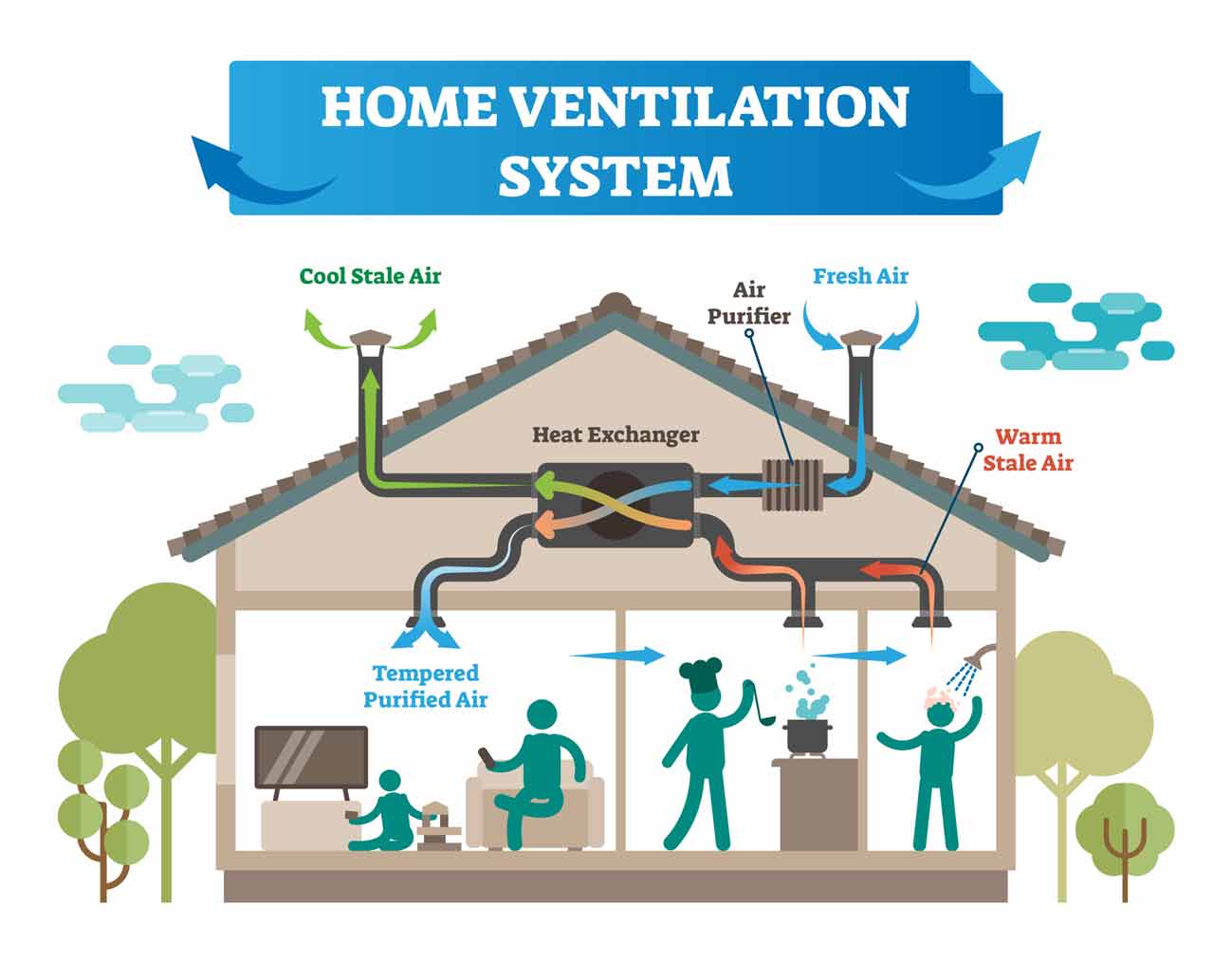The All-Inclusive Overview to the Uses of Heat Recovery Ventilation in Modern Buildings
Heat Recovery Ventilation (HRV) systems represent a considerable development in developing modern technology (HRV Heat Recovery Ventilation). They offer an approach for trading stale indoor air with fresh exterior air while minimizing power loss. This method not just enhances interior air quality however also adds to power effectiveness in both property and industrial structures. Recognizing the different applications and advantages of HRV can expose its critical role in modern-day style and sustainability efforts. The implications of this technology deserve exploring additionally
Understanding Heat Recovery Ventilation Solutions

Although many contemporary structures focus on energy performance, comprehending warm recovery air flow (HRV) systems is essential for enhancing interior air high quality and reducing power consumption. HRV systems work by transferring warm from stale indoor air to incoming fresh air, successfully maintaining comfortable indoor temperatures while reducing energy loss. These systems include a heat exchanger, fans, and ductwork that facilitate the circulation of air. During winter, HRV systems catch and reuse warm from the outgoing air, while in summer, they can help cool down inbound air. By continually trading air, HRV systems also decrease humidity and the concentration of indoor pollutants. Correct installment and upkeep of HRV systems are essential for their effectiveness and effectiveness in boosting overall structure efficiency and comfort.
Advantages of Heat Recovery Ventilation
Heat recovery ventilation systems use many benefits that enhance both power performance and interior air top quality in contemporary buildings. By capturing and recycling energy from exhaust air, these systems considerably decrease home heating and air conditioning costs, leading to reduced energy consumption. In addition, they preserve a consistent flow of fresh outside air, reducing the risk of interior air contaminants and allergens. This continuous exchange assists control moisture degrees, protecting against mold growth and making sure a healthier living environment. In addition, HRV systems add to sustainability objectives by reducing overall carbon impacts. Their capability to maximize ventilation without giving up thermal comfort makes them a useful addition to contemporary structure layout, advertising both economic and environmental advantages.
Applications of HRV in Residential Buildings
As home owners increasingly prioritize power efficiency and indoor air top quality, the applications of warm recovery ventilation (HRV) systems in property structures have ended up being a lot more widespread. HRV systems are particularly helpful in snugly secured homes, where preserving fresh air blood circulation is crucial for protecting against moisture accumulation and interior toxins. They effectively move heat from outbound stagnant air to incoming fresh air, minimizing power expenses related to home heating and air conditioning. Additionally, HRVs can enhance comfort levels by controling moisture and temperature level. They are additionally versatile for numerous residential designs, including single-family homes and multi-unit structures. Generally, incorporating HRV systems sustains lasting living techniques while ensuring a much healthier interior atmosphere for passengers.
HRV in Industrial and Industrial Setups
In business and commercial setups, the application of warm healing ventilation (HRV) systems has actually come to be significantly crucial for enhancing energy effectiveness and preserving air top quality. These systems properly move warmth from exhaust air to inbound fresh air, minimizing the requirement for extra home read this heating or cooling. This not just reduces power expenses yet also adds to sustainability campaigns. Industries such as manufacturing, warehousing, and office complex benefit significantly from HRV systems, as they aid visit the website regulate temperature level and humidity levels, making sure a comfy and effective setting. HRV systems help in eliminating contaminants and excess moisture, enhancing interior air high quality. As regulations around air top quality become more stringent, the adoption of HRV modern technology is likely to expand, making it an important component of modern-day commercial and commercial facilities.
Future Trends in Heat Recovery Ventilation Modern Technology

Regularly Asked Inquiries
Exactly How Does Heat Recovery Ventilation Effect Indoor Air Quality?
Heat recovery ventilation significantly improves indoor air quality by continually trading stale indoor air with fresh outdoor air while recouping energy. This process reduces toxins, keeps suitable moisture levels, and ensures a healthier atmosphere for residents.
Can HRV Solutions Be Installed in Existing Structures?
HRV systems can without why not find out more a doubt be mounted in existing structures. Retrofitting might need adjustments to ductwork and ventilation layouts, but it substantially boosts power effectiveness and interior air high quality, making it a practical option for older structures.
What Upkeep Is Required for HRV Systems?

Exist Particular Climates Where HRV Is Much More Effective?
Heat recovery ventilation systems are especially effective in climates with considerable temperature differences between seasons. These systems optimize energy efficiency by recouping warm from exhaust air, making them optimal for both cold and reasonably warm atmospheres.
Just How Do HRV Solutions Affect Power Expenses?
